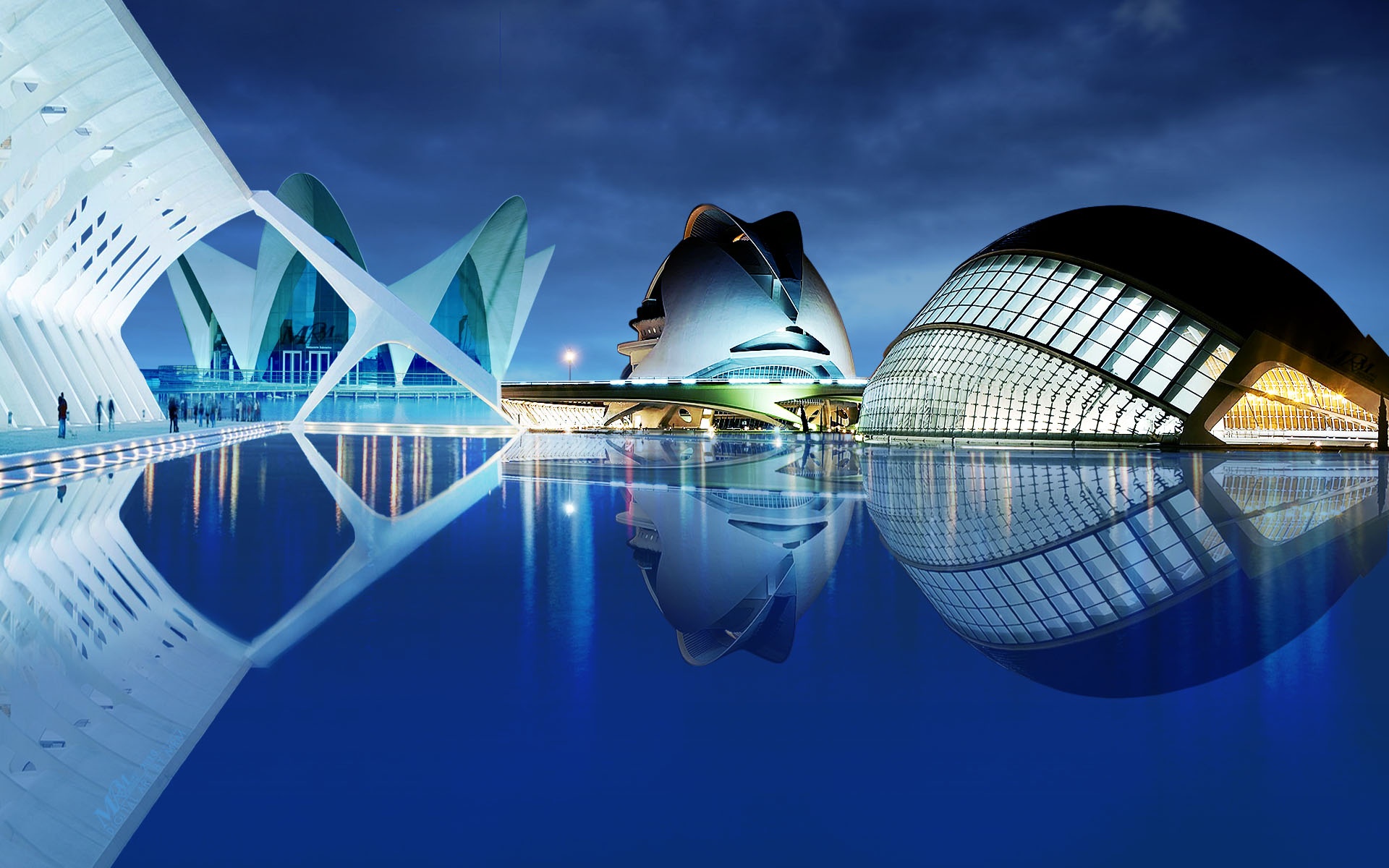Founded as a Roman colony in 138 BC, Valencia is today the third largest city of Spain, after Madrid and Barcelona, and has more than 809,000 inhabitants in the administrative centre (INE 2010).
The Valencian Captial (Comunidad Valenciana), is the ideal city for every season of the year for several reasons. Here I want to underline only 5 of these:
- Climate: Valencia has very mild winters and long warm to hot summers. The average annual temperature is 22.3°C during the day and 13.4°C at night. The minimum temperature normally registered in the coldest month of January, is between 2°C and 12°C. On the other hand the warmest months can reach temperatures of even 40°C and there are 2,600 hours of sunshine per year.

- Paella, Tapas and Agua de Valencia: based on the “Mediterranean Diet”, the gastronomy of the Spanish city is rich of natural and healthy products. Paella is the most famous dish related with the traditional cuisine and it could be made with meat, shellfish, vegetables or mixture of these. Another typical food is rice. It is possible to prepare it in the oven (arroz al horno), “a banda” with fish or black with squid’s ink. Other typical recipes are “All i pebre” (eels seasoned with a garlic pepper sauce) and the “Fideuà” (noodles in fish and shellfish broth). Inevitably you will need to try Tapas, a variety of cold or warm appetizers or snacks such as mixed olives and cheese or fried baby squid. Of course sweetmeats cannot be missed and most of them are based on cereals and nuts, as inherited from Moorish culture. As for drinks, you will need to try the most famous Spanish drink of Sangria. Nevertheless the most typical drink from this city is Agua de Valencia (Water of Valencia) a mixed drink of orange juice and sparkling wine.

- Sea and Beaches: more than 15 km of large sandy beaches offer a great variety of activities, such as swimming, sunbathing, windsurfing, sailing and dinghy sailing. The lively port divides the coast in two main sections. The first section in the north includes the most popular beaches, Malvarrosa, Cabañal and Las Arenas. This area offers many activities, bars and restaurants where you can try the most delicious traditional food 24 hours a day. South of the port, there are a number of quieter sandy beaches situated in the Albufera Nature Reserve; Pinedo, El Saler and Devesa.

- Architecture and Monuments: the architecture of Valencia perfectly reflects the turbulent history of the city. Gothic, Baroque, Romanesque, Arabic, Modernism and Futuristic styles are all combined, showing the evolution of the city. The most important and famous monuments to visit on the central and ancient Barrio del Carmen, are surely the Cathedral (13th-15thcenturies), the Gothic Basilica of the Virgin (Basílica de la Virgen de los desamparados), the 15th century Serrano and Quart towers (part of what was once the wall surrounding the city) and the UNESCO World Heritage Silk Exchange market (La Llotja de la Seda). Moreover the food markets are very traditional, the most important is the modernist Central Market (Mercado Central) that is also one of the largest in all Europe. If you are a fan of the modernist style, then you should visit the main railway station Estación del Norte. Finally the most recent building is certainly the futuristic City of Arts and Sciences (Ciutat de les Arts i les Ciències) designed by the architect Santiago Calatrava. This artist also designed the famous bridge that takes his name, El Puente de Calatrava. You should also take a walk on the Turia’s river bed, the green lung of the city. The river was redirected in 1957, after overflowing and is now an integral part of a stunning park full of nature, flowers and monuments – such as The Gulliver – that cut the city into two parts.
- The Folklore: Valencia is a city rich with festivals, events and traditions taking place throughout the year. The most relevant are without doubt the Fiesta de la Comunitat Valenciana on October 9th – The Day of the Valencian Community, Las Fallas (March) and the Noche de San Juan on June 23rd – famous for its fireworks and bonfires. Moreover the city also offers other kind of attractions, such as the Feria Internacional de Valencia (FIV) – a major event that takes place in December.
How to get to the capital of the Valencian Community:
It is very easy and convenient to get to Valencia. You would certainly be able to get there via your preferred mode of transport, be it: car, plane, train, bus or even ship, as the city has a port. However if you decide to get there by plane you can also opt for car rental, in fact you would be able to find a reliable and reasonably priced service. Moreover for those of you who love camping, it would be possible to rent a caravan or choose between several campsites located throughout Valencia.

